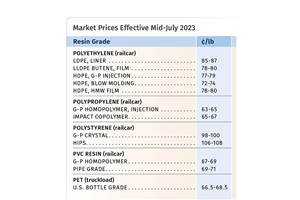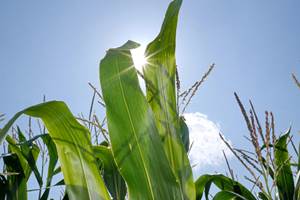Study Deems PHA as Biodegradable Alternative to Single-Use Plastics Like Straws
Applications for polyhydroxyalkanoate (PHA) can include additives, aqueous coatings, fibers, filaments, films, hot-melt adhesives and injection-molded articles.
A pioneer of renewable and sustainable biopolymers for over a decade, with a focus on creating plastic products that are biodegradable and compostable, has gotten a ‘green light’ for its polyhydroxyalkanoate (PHA) material from University of Georgia (UGA) researchers and members of the UGA New Materials Institute.
PHA from Danimer Scientific has been recognized as an eco-friendly alternative to petrochemical plastics, according the study, which was recently published in Environmental Science & Technology. Researchers found that PHA effectively biodegrades in aerobic or anaerobic environments, such as a landfill, waste treatment facility or the ocean.
Danimer’s PHA technology can be found in a broad array of end-use plastic products. Applications for its PHA biopolymers include additives, aqueous coatings, fibers, filaments, films, hot-melt adhesives and injection-molded articles. The company now hold 125 patents in nearly 20 countries for a range of manufacturing processes and biopolymer formulations.
Said Danimer chief marketing officer Scott Tuten, “The results of this study indicate that PHA is a dependable and biodegradable plastic for food packaging and other consumer applications. Many single-use products, such as straws, are under scrutiny or even banned because of their environmental impact at the end of their lifecycle. Our team remains dedicated to helping companies find the quality, sustainable materials that fit their needs. This issue quite literally affects the entire world, so we were grateful for the opportunity to supply UGA with samples of PHA to explore what happens to the material in different environments.”
To determine how PHA biodegrades in a proper waste management scenario, researchers measured the gaseous carbon loss of PHA samples placed in anaerobic sludge after 40 – 60 days of incubation and compared the levels to those of cellulose powder in the same setting. The anaerobic degradation of PHA was not significantly different from that of the cellulose powder. In addition, the methane yields of PHA were found to be similar to food waste, which suggests the material could be effectively processed alongside common organic waste in a landfill.
Said Shunli Wang, Ph.D., postdoctoral research associate in the College of Engineering at UGA, “As governments and 大象传媒es consider alternatives to traditional plastics for everything from straws to food packaging, it is important to have a thorough understanding of the impact that different materials will have on various environments. Our study is among the first to comprehensively examine PHA, and results show that it has a relatively fast anaerobic biodegradation rate.”
Researchers also observed the gaseous carbon loss of PHA in seawater, simulating a situation when plastic waste is deposited in an ocean. The study confirmed that if a solid form of PHA were to end up in such an environment it would begin to biodegrade over the course of six months. Polypropylene pellets, a traditional plastic used as the negative control in the experiment, remained intact and unchanged during the same time period.
The final component of the study investigated the microbial diversity of both experiments to identify the bacteria present when PHA degrades. In anaerobic sludge conditions, Cloacamonales and Thermotogales were the dominant bacteria. In aerobic seawater conditions, Gemmatales and Phycisphaerales were the most enriched forms of bacteria. Researchers concluded that future studies would have to include expanded microbial analysis of PHA degradation, which will ultimately help guide the design of more efficient waste management systems.
Read the summarizing the study on the Environmental Science & Technology website.
Related Content
BASF Delivers Biomass-Balanced Ammonia to Evonik
BASF’s BMBcert ammonia grade will be used by Evonik for production of nylon 12 and epoxy curing agents.
Read MorePerformance Nylon 6 and 66 Resins with High PCR/PIR Content
Syensqo has further extended its Omnix Echo portfolio of circular engineering resins with five new additions.
Read MorePS Prices Plunge, Others Appear to Be Bottoming Out
PS prices to see significant drop, with some potential for a modest downward path for others.
Read MoreAvantium and SCGC Partner to Scale-Up CO2- Based Polymers to Pilot Plant
SCGC will use Avantium’s Volta Technology which uses electrochemistry to convert CO2 to chemical building blocks such as glycolic acid which combined with lactic acid make carbon-negative PLGA.
Read MoreRead Next
For PLASTICS' CEO Seaholm, NPE to Shine Light on Sustainability Successes
With advocacy, communication and sustainability as three main pillars, Seaholm leads a trade association to NPE that ‘is more active today than we have ever been.’
Read MoreLead the Conversation, Change the Conversation
Coverage of single-use plastics can be both misleading and demoralizing. Here are 10 tips for changing the perception of the plastics industry at your company and in your community.
Read More












